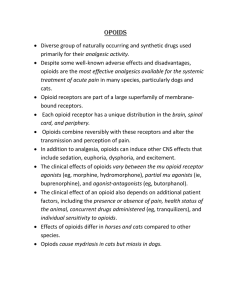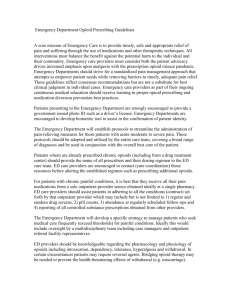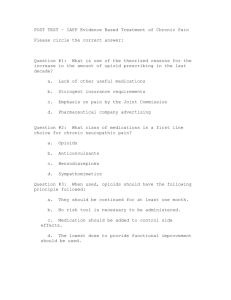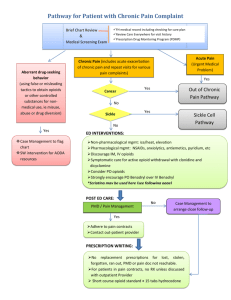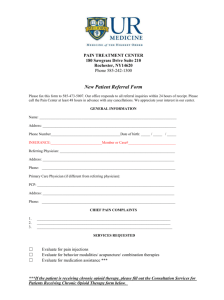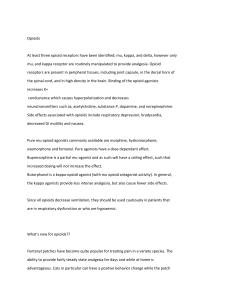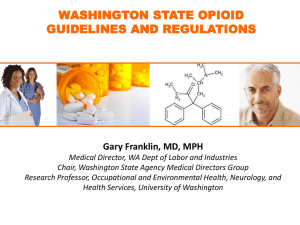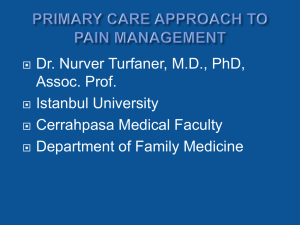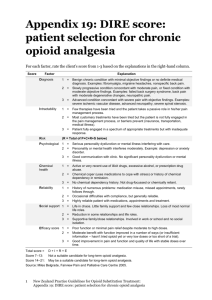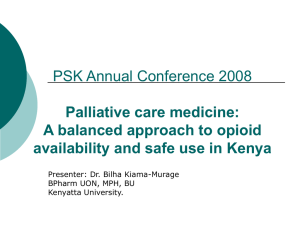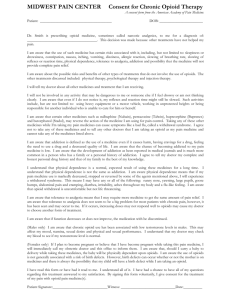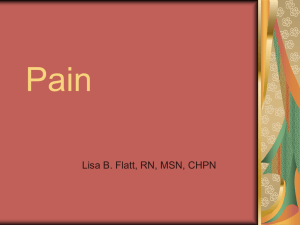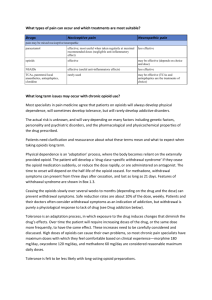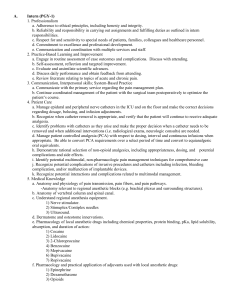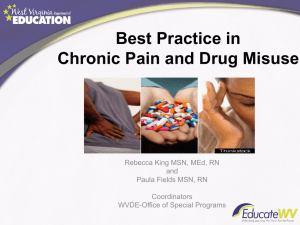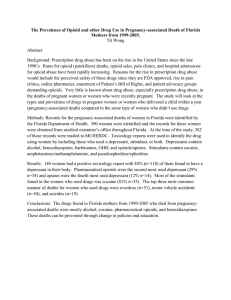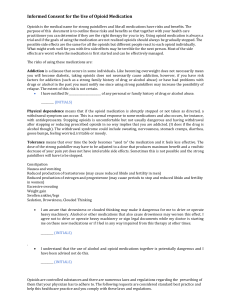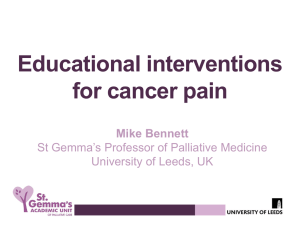JB_utility_as_analgesic
advertisement
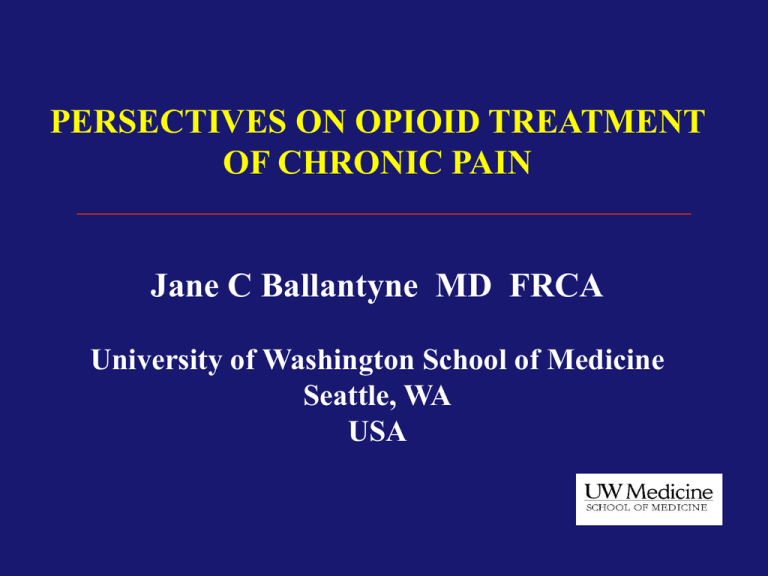
PERSECTIVES ON OPIOID TREATMENT OF CHRONIC PAIN Jane C Ballantyne MD FRCA University of Washington School of Medicine Seattle, WA USA The arrangement was not to prove a very satisfactory one: the Queen was to find Helena (her daughter) - who, like to so many of her contemporaries, became addicted to laudanum 'difficult to live with'. Christopher Hibbert in Queen Victoria, a Personal History, Da Capo press 2001, p 393 “I’d rather be in pain than have anyone think I’m an addict”. From Kathleen Foley, quoting one of her patients. This clinical anecdote captures the reality of the under treatment of pain, which is one of the serious, unintended consequences of the war on drugs. The moral case Opioids should not be withheld from patients with chronic pain because patients denied opioid suffer needlessly The safety case Addiction rates during chronic pain treatment are very low The case for long-acting opioids Long-acting opioids provide better, more stable and continuous pain relief and are preferred especially in patients at risk of abuse, because the steady state removes the focus on getting the next dose Brennan F, Carr DB, Cousins M. Pain management: a fundamental human right. Anesth Analg. 2007;105(1):205-221. Expanded Treatment 1997 Three societies issues guidelines: - “expanded use of opioids” - “more compassionate care” By 2008 - opioids are most prescribed medications - Pain Management Clinics + 350% - Methadone +1,000% - Oxycodone + 878% Sources: Automation of Reports and Consolidated Orders System •Chronic pain rapidly acquired disease status •Pain management became a specialty in its own right •Pain management was rarely included in medical school curricula •Physicians at the front line learned then through postgraduate education (often drug-company sponsored) and through advertising What has been learned from the widespread adoption of chronic opioid treatment in the US? 1) Analgesia from opioids deteriorates over time, and patients develop opioid refractoriness 2) Addiction is a far greater problem than once thought, both for opioid treated pain patients and for those around them •increasingly patients present with severe pain despite opioid treatment (Mao ’02, Mercadante et al ’04) •some patients improve when taken off opioids (Schofferman ’93, Harden ’02) •acute pain may become refractory to opioids in chronic users (Mitra & Sinatra ’04, Wilder-Smith & Arendt-Nielsen ’06, Angst & Clark ’06) Mechanisms for deterioration in analgesia over time •Pharmacological tolerance •Opioid-induced hyperalgesia •Withdrawal •Psychologic factors
